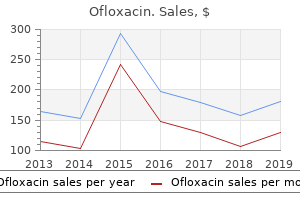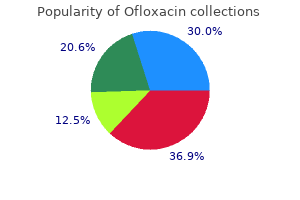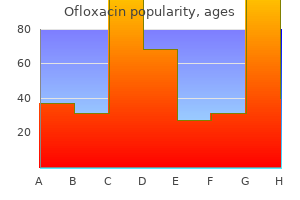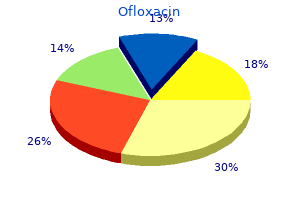"Proven ofloxacin 400 mg, antibiotics guide."
By: Bob Atkins
- Emeritus Professor, Epidemiology & Prev Med Alfred Hospital
https://research.monash.edu/en/persons/bob-atkins
Wetlands: Those areas that are inundated or saturated by floor water or groundwater at a frequency and length adequate to bacteria in the blood generic ofloxacin 200mg assist antibiotic beads for osteomyelitis generic ofloxacin 200 mg line, and that underneath normal circumstances do assist antibiotic journal pdf 200 mg ofloxacin, a prevalence of vegetation usually adapted for life in saturated soil circumstances antibiotic resistance to gonorrhea generic ofloxacin 400 mg without prescription. This includes wetlands created, restored, or enhanced as a part of a mitigation process. Wet Pond: A facility that treats stormwater for water quality by utilizing a everlasting pool of water to remove typical pollutants from runoff via sedimentation, organic uptake, and plant filtration. If so, how old are these information, and how do they compare to overall numbers of these with permit protection? Yes, it is a actually broad query, however one thing alongside the strains of: based on inspections (or monitoring information, or whatever metric you utilize), have you ever made any determinations on numbers of services out of compliance, or alternatively, in compliance? Industrial Monitoring is specific to the General Permit sort and related discharge. Additional monitoring for the pollutant of concern for industries which may be inflicting or contributing to stream impairment. The proposed next term draft permit would require at least 4 stormwater monitoring occasions per 12 months. Industrial services required to pattern their stormwater discharge 4 occasions per 12 months. Also required to conduct visual monitoring of their discharge on a monthly foundation when discharge is present. Industry required to pattern for turbidity, pH, zinc, and petroleum oil and grease. If exceeds zinc benchmark, then also must monitor for complete copper, complete lead, and hardness. Selected outfalls for consultant land uses are monitored intensively for a variety of chemical constituents including toxicity. For discharges to impaired 303(d) waters monitor required for the pollutants for which the waterbody is impaired. Benchmark monitoring for timber, metal mining, concrete and gypsum, junkyards and recycling. Effluent limitation monitoring for coal piles, concrete manufacture, and asphalt emulsion. Alabama California Connecticut Georgia Hawaii Maine Minnesota Nebraska Nevada New York Yes, if enough authorized authority exists. Local companies inspection to guarantee compliance with native stormwater or municipal ordinance. Industries may be inspected underneath native authority, however native inspections are occasionally performed. No state statute for private property entry to examine for stormwater management. Facilities which may be inflicting or contributing to stream impairment are excessive threat. Individual stormwater permits required for some airports, landfills, sand and gravel operations, and bulk terminals. Standards for designers, a field guide for contractors (2006), and the Low Risk Handbook. Stormwater Management Manual for Western Washington (2005) and Stormwater Management Manual for Eastern Washington (2004) No No Industrial Yes. The model is a bodily based model developed to simulate panorama processes with a excessive level of spatial detail in massive watersheds. A watershed may also be divided into only subwatersheds that are characterised by dominant land uses, soil sort, and management. Processes simulated within the model are pushed by the water balances within the watershed. The water balance is separated right into a land phase and a routing phase of the hydrologic cycle. Loads of water, sediment, nutrients, and pesticides are managed by the land phase.

Strategy Protected space Zoning Purchase of water/land rights Ecotourism Communitybased natural resource administration Direct payments for ecosystem companies Integrated conservation and development initiatives Impact on local resource customers Limits entry antibiotic resistance medical journals cheap 400 mg ofloxacin fast delivery, extraction antibiotic jokes buy ofloxacin 400mg amex, and use of designated space Designates areas where local sources may be extracted Transfers ownership or use rights to/from locals Brings outdoors investment to bacterial replication ofloxacin 200 mg fast delivery local businesses antimicrobial copper products purchase ofloxacin 400 mg without a prescription, employment in service industry Formal encoding of local monitoring and managing resource extraction Payment obtained for efficiently sustaining local sources Development of smallscale financial initiatives that incorporate sustainable resource use Response to. Habitat loss and degradation, overexploitation Habitat loss and degradation, overexploitation Water diversions, overexploitation Multiple threats Multiple threats Overexploitation, habitat loss and degradation, air pollution Multiple threats range of local involvement in one particular conservation technique, protected areas. Local resource customers could not wish to be involved in all features of conservation administration (as was the case in Kakadu National Park, Australia). Ethical imperatives direct the extent and manner of consulting local resource customers. The three national parks offered here contain local resource customers in conservation coverage and implementation. As park policies are implemented in myriad methods, this empirical comparison accentuates the differing degree and nature of local conservation involvement. Sagarmatha National Park, Nepal three three three three 3via enclaves 3Limited three three Rio Ouro Preto Extractive Reserve, Brazil three Kakadu National Park, Australia three three three three three three three three three Do policies allow. Continued subsistence use Formalized coverage consultation Sharing of entrance charges Comanagement Integration of local resource administration regimes Local land ownership Training/integration into administration construction Establishment of organizations with substantial local illustration Power to determine land use Technical help concerning resource administration three 3in local organizations only three three © Oxford University Press 2010. Critical to these debates is both a recognition that rights heretofore ignored need be acknowledged, addressed, and built-in into conservation (together with those pertaining to entry, use rights, and compensation in the event of their loss), and that justice and fairness more broadly have to turn out to be a cornerstone principle in the advancement of conservation and the upkeep of biodiversity. Rights refer to a bundle of entitlements or permissions assigned to or affiliated with a bunch or population. It is commonly difficult for conservation officials to perceive the histories of peoples which will have preceded a park or protected space. It is nonetheless necessary to recognize that many rightsbased systems are formalized in treaties; in titles Box 14. Women play an necessary role in the collection, use and sale of forest products corresponding to fuelwood and fodder to meet household requirements, thereby enhancing the financial security of their households (Wickramasinghe 2005). Fuelwood is a vital source of domestic power for rural households in tropical international locations and girls are sometimes involved in the harvesting and sale of fuelwood collected from the forest (Gera 2002). Commercialization of forestry operations and deforestation due to this fact adversely affect the livelihoods of poorer forest dependent households. The Chipko motion is one case in point, where rural women and kids fought back towards timber operations. Chipko means "to embrace" or "to hug" and the concept of saving bushes from felling by embracing them is old in Indian tradition. The first recorded occasion of such action was in 1604 among the many Bishnois neighborhood in Rajastan when two Bishnoi women, Karma and Gora, sacrificed their lives in an effort to forestall the felling of Khejri (Prosopis cineraria) bushes. The Chipko agitation began in 1971 in the Uttaranchal in the Himalayas, as a grass roots Gandhian motion to assert the rights of the local communities over forest produce (Berreman 1985; Joshi 1982). During British rule, the Himalayan forests have been heavily exploited for timber, notably during the two world wars. The alarm was sounded and a widow in her 50s, Gaura Devi, collected twenty seven women and kids and rushed into the forest to shield the bushes. This motion unfold to many areas on this area, and village women saved around one hundred 000 bushes from being cut. The motion was characterized by decentralized and locally autonomous activism by local communities, led principally by village women. Following this, the federal government was pressured to abolish the personal contract system of felling and in 1975 the Uttar Pradesh Forest Corporation was set as much as carry out this function. The latter have been led by Shri Chand Prasad Bhatt, one of the unique organizers of the Chipko motion who supplied a unified vision and leadership to the motion. Bhatt worked closely with the village women and inspired them to assert their environmental rights. In 1987 Chipko was chosen for a "Right Livelihood Award," often known as the "alternate Nobel" prize honor. The honor was rightly deserved for this small motion dominated by women that grew to become a call to save forests.

The benefits of putting in a scrubber rely upon the size of the uncovered population antibiotics how long ofloxacin 200mg fast delivery, which depends on plant location herbal antibiotics for sinus infection cheap ofloxacin 200 mg otc. Our estimates are delicate to infection question cheap 200 mg ofloxacin visa assumptions about scrubbing costs antibiotic for strep throat discount ofloxacin 400mg fast delivery, in addition to to assumptions about well being impacts. Our baseline low cost price of 8 % is a social low cost price, equal to the rate of interest on authorities bonds in India. If that is replaced by the weighted non-public value of capital, which we estimate to be eleven. At the identical time, our estimate of the influence of a cessation lag is sort of conservative. We successfully assume that only eighty % of the ultimate mortality benefits of scrubbing might be obtained. We additionally observe that retrofitting power vegetation with scrubber units would enhance the price of electricity. The historic method- relying on tall stacks-mirrors the method taken in the United States in the 1980s to obtain native air high quality standards. Although Indian coal has lower sulfur content than coal mined in the jap United States, a higher quantity of coal is used to produce a kWh of electricity in India due to the low heating value of Indian coal. In addition, the rise in imported coal with higher sulfur content will doubtlessly enhance the average sulfur content of coal used in Indian power vegetation. We dedicate this chapter to Shama Gamkhar, our coauthor, who died earlier than it was completed. We additionally thank Russ Dickerson, Jeremy Schreifels, and two anonymous referees for useful comments. We use dying charges by age and trigger reported in the 2013 Global Burden of Disease. The plant is positioned in the south of India and has a smaller uncovered population than vegetation in northern India. The use of coal with ash content exceeding 34 % is prohibited in any thermal power plant positioned greater than 1,000 km from the pithead or in urban, delicate, or critically polluted areas. Costs and Benefits of Installing Flue-Gas Desulfurization Units at Coal-Fired Power Plants in India 247 Pope, C. First and foremost, we would like to thank our 32 quantity editors who offered the mental vision for their volumes based on years of professional work of their respective fields, after which devoted lengthy hours to reviewing each chapter, providing leadership and steerage to authors, and framing and writing the summary chapters. We additionally thank our chapter authors who collectively volunteered their time and experience to writing over 170 comprehensive, evidence-based chapters. We owe immense gratitude to the institutional sponsor of this effort: the Bill & Melinda Gates Foundation. Many thanks to Program Officers Kathy Cahill, Philip Setel, Carol Medlin, Damian Walker and (presently) David Wilson for their thoughtful interactions, steerage, and encouragement over the lifetime of the project. We are tremendously grateful for the knowledge and steerage offered by our advisory committee to the editors. Patrick Kelley, Gillian Buckley, Megan Ginivan, Rachel Pittluck, and Tara Mainero managed this effort and offered critical and substantive input. World Bank Publishing offered exceptional steerage and support all through the demanding manufacturing and design course of. We would notably wish to thank Carlos Rossel, Mary Fisk, Nancy Lammers, Rumit Pancholi, Deborah Naylor, and Sherrie Brown for their diligence and experience. Additionally, we thank Jose de Buerba, Mario Trubiano, Yulia Ivanova, and Chiamaka Osuagwu of the World Bank for providing professional counsel on communications and advertising strategies. Chan School of Public Health, economic analysis session (September 2015) University of California, Berkeley School of Public Health, and Stanford Medical School, occupational and environmental well being consultations (December 2015). Carol Levin offered excellent governance for value and price-effectiveness analysis. Stйphane Verguet added useful steerage in applying and enhancing the extended value-effectiveness analysis technique. Elizabeth Brouwer, Kristen Danforth, Nazila Dabestani, Shane Murphy, Zachary Olson, Jinyuan Qi, and David Watkins offered exceptional research help and analytic help. Brianne Adderley ably managed the finances and project processes, while Jennifer Nguyen, Shamelle Richards, and Jennifer Grasso contributed exceptional project coordination support. He worked as a surgeon in Ghana for 4 years, including at a rural hospital (Berekum) and on the Kwame Nkrumah University of Science and Technology (Kumasi). In 2010, he returned to his place as Professor of Surgery (with joint appointments as Professor of Epidemiology and Professor of Global Health) on the University of Washington.

While still not ubiquitous in scholarly publishing infection the invasion begins trusted 400 mg ofloxacin, there are growing journal and writer necessities for researchers to bacteria jokes for kids buy ofloxacin 400 mg cheap make the supporting information out there alongside the published journal article infection 2 game order 400mg ofloxacin visa. The precise journal necessities for information sharing fall on a spectrum from strict to antimicrobial mouth rinse brands cheap ofloxacin 200 mg with amex loose. The principal incentive is to increase the reproducibility of the articles these journals publish. Greater scrutiny of analysis information can forestall the publication of problematic analysis and make sure that any subsequent retractions are simpler to establish and resolve, both of which enhance the quality and popularity of a journal. Open-access journals also have an altruistic motivation to increase their open mission into the info realm. Navigating the Data Policy Landscape for Curation Libraries undertaking information curation must pay attention to funding agency, institutional, and journal information insurance policies as these insurance policies can immediately have an effect on local curation practices. Part of this consciousness requires the ability to navigate the variances that regularly exist between the policy types. Thankfully, there are also a couple of areas of policy settlement that can further strengthen curation efforts. With respect to policy settlement, both funder and institutional insurance policies usually embody a requirement about information retention after the tip of project. However, whereas funder and institutional information insurance policies usually embody retention mandates, retention occasions can typically conflict. This creates confusion for researchers in how lengthy they actually must retain information and whose policy takes priority. In basic, libraries ought to recommend that acknowledged retention occasions be treated as minimums, with a preference for longer, however not indefinite, retention durations. A second area of overlap between institutional and funder insurance policies is that duty for the info usually falls to both the researcher and the college. In basic, the institution is held responsible for the compliance of its researchers and has a monetary curiosity in assembly these necessities. In terms of knowledge curation efforts, these shared responsibilities lend authority to libraries to preserve information on behalf of the college and its commitments, as libraries are a natural home for this sort of work. These measures can embody researcher misconduct, avoiding delicate information breaches and huge-scale audits, and points when prestigious analysis is in- Institutional, Funder, and Journal Data Policies 69 volved or where the college has a big monetary stake in the analysis or analysis merchandise, along with routine compliance necessities from funders. As analysis funding turns into more aggressive, such points are more likely to arise more regularly. Journal information insurance policies deviate from funder and institutional policy on this area in that they hardly ever establish institutions as having any function at all in policy compliance. Funding companies are usually involved with information management, preservation, and sharing as they search to forestall duplication and enhance return on funding. In distinction, institutional information insurance policies are more focused on information possession and information management as they search to keep popularity and business management of intellectual property. All policy types goal to lengthen the life cycle of analysis information, however two achieve this by selling openness and whereas the third does so by placing restrictions on the info. Another challenge to curation is that the three policy types have different enforcement mechanisms. Journals can either refuse to publish articles by noncompliant researchers or retract them later. Finally, one of many largest challenges comes from when insurance policies are diametrically opposed. Libraries, nonetheless, already help researchers in evaluating journals for publishing and might apply that talent set right here, holding a key place from which to establish where insurance policies conflict and to collaborate with administrators, researchers, and journal editors to resolve the consequences of disparate insurance policies on information curation. Navigating this shifting policy panorama could be a challenge for libraries working to curate analysis information. There are, nonetheless, many things that libraries can do on this area: Identify opportunities for the library to act on behalf of the institution and its obligations to preserve and retain information. There is no one greatest method to navigate the altering policy panorama, however by being aware of the myriad necessities, libraries can use them to one of the best benefit. Institutional, Funder, and Journal Data Policies 71 Summary Libraries engaged with information curation have to be educated about the funding agency, institutional, and journal information insurance policies that influence researcher responsibilities. Awareness of those evolving insurance policies will improve the library companies for analysis information curation. We also have the opportunity to influence improvement or modification of our institutional insurance policies to enhance local information curation practices. Future navigation of insurance policies shall be necessary until further readability and harmonization are established between funding companies, institutions, and journals.

Other bone alterations characteristic of thermal trauma embrace delamination (flaking or layering because of bacteria characteristics cheap ofloxacin 200mg bone failure) alternative antibiotics for sinus infection purchase ofloxacin 400 mg on line, shrinkage antibiotic quality control buy ofloxacin 400mg with amex, fractures antibiotics for uti when pregnant generic ofloxacin 200mg fast delivery, and heat-particular burn patterning. When interpreting injuries ensuing from thermal damage, an anthropologist can differentiate between thermal fractures and fractures that occurred earlier than heat publicity, thereby contributing to the interpretation of burn patterning. Timing of Injury Another essential part of any anthropological trauma evaluation is the dedication of the timing of injury. Timing of injury is historically split into one of three classes: antemortem (earlier than dying), perimortem (at or across the time of dying), and postmortem (after dying). This classification system differs slightly from the classification system used by the pathologist as a result of it particularly references the qualities of bone tissue and bone response to external forces. For instance, in cold or freezing temperatures a body could be preserved for prolonged durations of time growing the perimortem interval, while in desert climates decomposition is accelerated, thereby considerably reducing the postmortem interval (Galloway et al. Antemortem injuries (occurring well earlier than dying and never associated to the dying incident) are typically characterized by some degree of healing, in the form of a fracture callus or unification of fracture margins. Finally, postmortem injuries (occurring after dying, while bone is no longer fresh) are characterized by jagged fracture margins, ensuing from a lack of moisture content material during the decomposition process (Galloway et al. In basic, all bone traumas ought to be categorised in accordance with the timing of injury, if possible. The Role of the Forensic Anthropologist in Trauma Analysis Within the medicolegal system, forensic anthropologists are often known as upon by the health worker, forensic pathologist, or coroner to help with an interpretation of trauma. Analysis and interpretation of soft tissue injuries fall throughout the purview of the health worker or pathologist. It can also be essential to note that the main function of the forensic anthropologist is to provide data pertaining to skeletal injury to help the health worker/pathologist of their final interpretation of injury. Osteoblastic (bone building) and osteoclastic (bone destruction or breakdown) activities are regular processes of bone growth, development, and maintenance; nonetheless, when bone development or breakdown exceeds what is important, the bony change could be categorised as pathological, resulting in a bone pathology. Bone pathologies could be categorised in a number of methods, including: congenital: occurring in the developmental period, usually hereditary; traumatic: ensuing from extrinsic elements and forces; degenerative: inflicting the degeneration or breakdown of bone tissue; infectious: ensuing from bacterial, viral, or fungal brokers; circulatory: ensuing from a disruption in the relationship between the skeletal and circulatory system; metabolic: ensuing from nutrient deficiencies; endocrinological: caused by hormonal imbalances; and neoplastic: associated to abnormal development, both benign and malignant, of bone tissue. Characterized by malignant tumors that start inside bone tissues, osteosarcoma is a major bone most cancers (that means it begins immediately in bone tissue, rather than spreading to bone from different body tissues). Malignant tumors associated with osteosarcoma often happen during development and growth and are noticed most frequently in adolescents and young adults (Ortner and Putschar 1981, 384). Rickets is a metabolic bone pathology ensuing from a Vitamin D deficiency in childhood (Ortner and Putschar 1982, 273). Vitamin D is important to the mineralization of bone tissue and is characterized by all kinds of cranial and postcranial modifications, including the following: asymmetrical deformities of the cranium, bowing of the lengthy bones, vertebral compression fractures, and a smaller, thicker pelvis (Figure 15. The skeletal manifestations of achondroplasia are most obvious in the lengthy bones comprising the legs and arms, while the trunk is of relatively regular proportions in individuals with achondroplasia (Figure 15. The illness is marked by both osteoblastic and osteoclastic activity, with excessive osteoclastic resorption adopted by osteoblastic proliferation leading to pointless amounts of new woven bone (Ortner and Putschar 1981, 309). The majority of the skeletal evaluation process revolves across the identity of the deceased individual. Generally talking, processes that alter the bone after dying are referred to as taphonomic modifications. Bioarchaeology and Forensic Anthropology 569 the term taphonomy was initially used to check with the processes via which organic remains mineralize, also known as fossilization. Within the context of biological anthropology, the term taphonomy is healthier defined as the research of what happens to human remains after dying. Initial elements affecting a body after dying embrace processes such as decomposition and scavenging by animals. However, taphonomic processes encompass far more than the preliminary period after dying. For instance, plant root development can leach minerals from bone, leaving a particular mark. Sunlight can bleach human remains, leaving exposed areas whiter than those which remained buried. Some taphonomic processes may help a forensic anthropologist estimate the relative amount of time human remains have been exposed to the weather. For instance, root development via a bone will surely point out a body was buried for more than a few days. Forensic anthropologists should be very cautious when attempting to estimate time since dying primarily based on taphonomic processes as environmental situations can greatly influence the speed at which taphonomic processes progress. For instance, in cold environments, tissue might decay slower than in warm, moist environments.
Purchase 200 mg ofloxacin otc. What is Yeast Infection Discharge | Yellow Vaginal Discharge and Yeast Infection.
References:
- http://www.bio-nica.info/biblioteca/BIO2006BiotechGuide.pdf
- https://www.beckmancoulter.com/wsrportal/techdocs?docname=/cis/BAOSR6x47/%25%25/EN_CRP_BAOSR6x47_US.pdf
- https://erd.dli.mt.gov/Portals/54/Documents/LMAC/LMAC%20Version%201/6th%20Edition%20of%20the%20AMA%20Guides%20to%20Permanent.pdf

